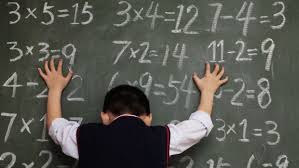For many kids between the ages of 8 and 13, math can feel like a frustrating subject filled with confusing concepts. They might find themselves saying things like, “I don’t get it!” or groaning at the thought of another math lesson. However, math is far from dull—it’s a fascinating subject that plays a crucial role in the world around us. Here are ten captivating math facts that are sure to spark your child’s imagination and help them see the wonder in this sometimes-misunderstood subject.
- Math is the language of nature.
One of the most exciting aspects of math is how it is intertwined with the natural world. Whether it’s the spiral pattern of a seashell, the symmetry of a flower, or the way the leaves of a tree are arranged, mathematical principles govern the structure and patterns of nature. For example, the Fibonacci sequence, a series of numbers that starts with 0 and 1, appears in the growth patterns of many plants and animals. When kids realize that math helps explain the natural beauty they see every day, it can make the subject feel much more interesting. - Math inspired the world’s first computer.
Did you know that math played a direct role in the creation of the world’s first mechanical computer? Charles Babbage, a mathematician in the 19th century, invented what is known as the “Difference Engine,” a machine based on mathematical principles. Babbage’s creation laid the foundation for modern computing, proving that math isn’t just about numbers—it can also drive technological innovation. - Math is behind famous architecture.
From the Pyramids of Egypt to modern skyscrapers, math plays an essential role in the design and construction of architectural masterpieces. Architects and engineers use geometry, algebra, and calculus to ensure buildings are safe, stable, and aesthetically pleasing. The next time your child sees a famous landmark or an incredible structure, they can marvel at how math made it possible. - Pi is an infinite number.
One of the most famous constants in math is pi (π), which represents the ratio of a circle’s circumference to its diameter. The fun part? Pi is an irrational number, meaning it has infinite decimal places and no repeating pattern. The first few digits of pi are 3.14159, but there are many more digits, and mathematicians have calculated pi to millions of decimal places. Pi Day, celebrated on March 14th (3/14), is a great way to show your kids how math can be both fun and endless. - Math can predict the future!
Well, not exactly the future, but math can certainly help us predict patterns. For example, through probability and statistics, mathematicians can predict weather patterns, stock market trends, and even the likelihood of certain events happening. This ability to make predictions shows how math is not just theoretical but practical, helping people make informed decisions in everyday life. - Math helps with problem-solving in everyday life.
Whether you’re budgeting for groceries, measuring ingredients for a recipe, or calculating how much time you have left before a soccer game, math is always at work. Teaching kids how math is useful in daily activities helps them realize its importance and usefulness beyond the classroom. - The concept of zero changed the world.
The concept of zero is one of the most important innovations in mathematics. It was first used by ancient civilizations in India, and it revolutionized the way humans think about numbers. Without zero, we wouldn’t have the place value system, and many other mathematical concepts like algebra and calculus would be impossible to understand. Explaining the significance of zero can be an eye-opening moment for kids. - Math is in music.
Believe it or not, math and music are closely related. Rhythm, tempo, and even melody can be understood through mathematical concepts like fractions and patterns. Musicians often use mathematical ratios to create harmonies and chords, making math a key player in the world of music. So, next time your child listens to their favorite song, remind them that math is behind the music! - The ancient Egyptians used math to build the pyramids.
The ancient Egyptians were among the first to use geometry to build the massive pyramids that still stand today. They used math to measure angles, calculate distances, and ensure the stability of these massive structures. This historical example helps kids appreciate how math has shaped human history. - Math is everywhere!
From the patterns found in nature to the technology we use every day, math is present in almost everything. It’s used in art, science, music, architecture, and even sports. The more kids discover how math appears all around them, the more they’ll realize it’s not just a subject to get through—it’s a powerful tool for understanding the world.
By exploring these exciting facts, kids can see that math isn’t just a set of problems to solve—it’s a way to understand and appreciate the world around them. Whether it’s through the beauty of nature or the power of technology, math is everywhere, waiting to be discovered!
For more fun facts about math, check out this article.





